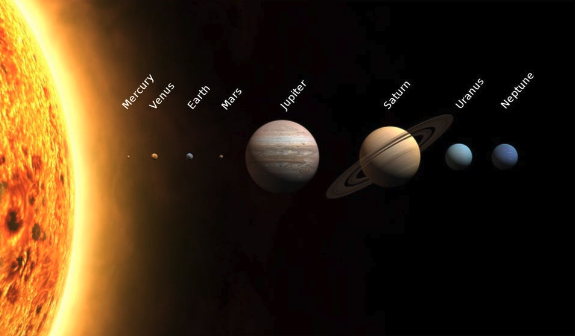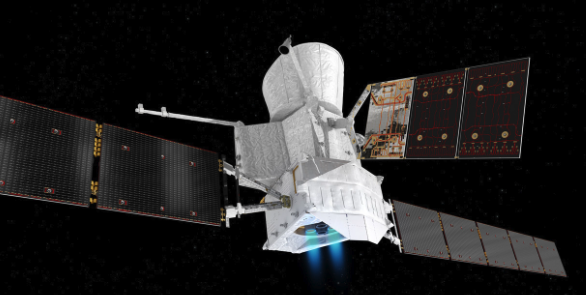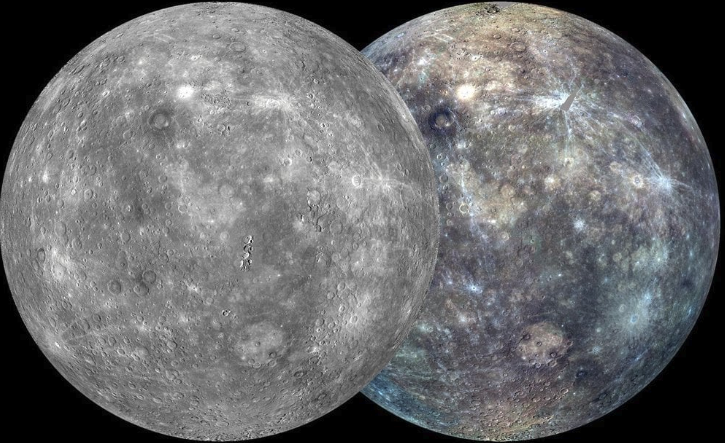Mercury Exploration: The First Planet From The Sun
Mercury is our solar system’s smallest planet. It’s only slightly larger than Earth’s moon. And like the moon, it has almost no atmosphere. As a result, craters from debris impact litter Mercury’s surface.
Mercury and its neighbor Venus are the only planets in our solar system without any moons. So let’s dive right and learn some fun facts about Mercury, the first planet from the Sun.

Why Doesn’t Mercury Burn Up Since It’s So Close To The Sun?
Since Mercury is sun-scorched, why doesn’t the planet burn up? Mercury’s dayside superheats to around 800 degrees Fahrenheit (430°C). But at night, it plummets hundreds of degrees below freezing, down to -290°F (-180°C). It’s so cold that ice may form in some surface craters.
While the Sun superheats one side of Mercury, it’s not hot enough to melt the dense planet. The radius of its metallic inner core is 1,289 miles (2,074 kilometers). That’s almost 85% of the planet’s entire radius.
Evidence exists that part of the inner core is molten or liquid. It is similar to the Earth’s solid inner core, surrounded by a fluid, molten iron, and nickel outer core. Mercury’s outer shell is similar to Earth’s rocky mantle and crust.
What Spacecraft Made Visits To Mercury?
While humans haven’t traveled to the planet, Mercury exploration is still critical. Past and ongoing investigations seek to answer some of our most pressing Mercury questions.
Mariner 10
Mariner 10 was the first spacecraft to make flybys of Mercury, collecting data as it passed.
- Three flybys in 1974 and 1975
- The spacecraft took more than 2300 images.
MESSENGER
The first spacecraft to orbit Mercury was the MESSENGER.
- MErcury Surface, Space ENvironment, GEochemistry, and Ranging mission
- Launched from Cape Canaveral, Florida, on August 3, 2004.
- January 14, 2008, orbited at a distance of 125 miles.
- October 6, 2008, orbited at a distance of 124 miles.
- September 29, 2009, orbited at a distance of 124 miles.
BepiColombo
The European Space Agency’s BepiColombo completed two flybys of Mercury with plans for more.

- Flyby dates: Oct 1, 2021; June 23, 2022; June 20, 2023; Sept 5, 2024; Dec 2, 2024; Jan 9, 2025
- Arrival at Mercury: December 5, 2025
- Beginning of routine science operations at Mercury: Expected in February 2026
- Mercury exploration answers sought:
- Where did it form?
- Is there water on Mercury?
- Is the planet dead or alive?
- Why is Mercury so dark?
- Why does Mercury have a magnetic field?
How Long Would Humans Survive On Mercury?
Because of its temperature extremes and the planet’s solar radiation, it’s unlikely that life as we know it could exist on Mercury. Humans could not survive at all.
Venus is warmer
Although Mercury is closer to the Sun, it is cooler than Venus. Venus has a denser atmosphere and higher albedo, the highest in the solar system at 0.90. So that means it reflects more of the Sun’s heat than it absorbs. But once the heat gets reflected, it struggles to pass through Venus’ thick atmosphere. So heat gets trapped.
Mercury is colder
In terms of temperature, Mercury is the opposite of Venus. Mercury’s thin atmosphere and low albedo allow it to release or absorb most of the heat it receives. Mercury receives four times more of the Sun’s energy and absorbs almost nine times more than Venus. But it’s still cooler than its neighboring planet.

Rotation around the Sun
Mercury rotates very slowly. One complete rotation takes 59 Earth days. Mercury travels around the Sun more quickly than any other planet, taking only 88 days to travel around the Sun. Because of this slow spin and fast rotation around the Sun, Mercury only has one sunrise every 180 days.
Standing stationary on the planet, you’ll be in the dark for six months out of every twelve Earth months.
Summary
Although Mercury is inhabitable to life as we know it, scientists are still gathering data about the planet. Planetary scientists hope that BepiColombo will provide answers about how Mercury was formed, its magnetic field, and its core.
